Wheat cultivation prospect in south brightens
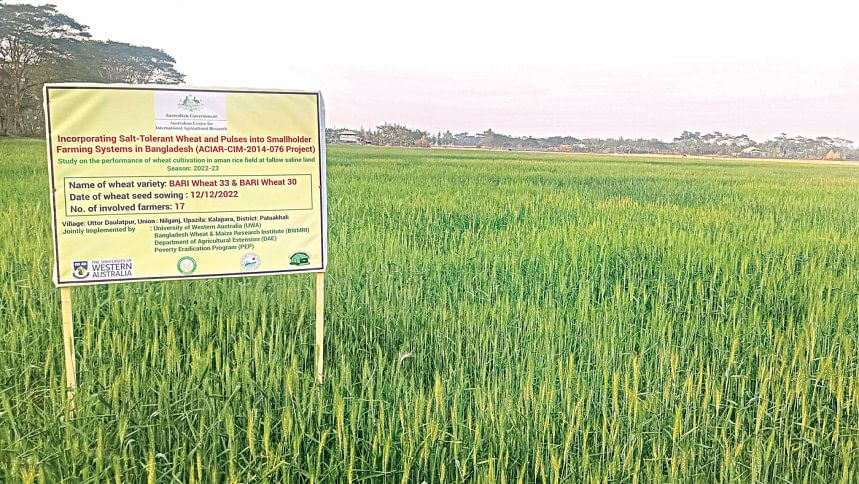
Farmers in Patuakhali have successfully cultivated wheat through a method known as relay cropping, raising hopes that lands left fallow during the dry season can now be used for growing the cereal grain.
Relay cropping is the process of planting a second crop on the same land where a standing crop is close to harvest.
Being a coastal district in southern Bangladesh, the saline-prone land in Patuakhali becomes unsuitable for growing wheat in absence of adequate rain.
So, relay cropping allows farmers to plant wheat alongside standing crops, such as Aman paddy, when soil salinity levels are still tolerable.
Apart from ensuring better earnings for farmers, cultivating wheat during the off season will help reduce imports of the cereal grain.
Bangladesh produces around 11 lakh tonnes of wheat against an annual requirement of 75 lakh tonnes while the rest is imported.
After Aman paddy is harvested in December, soil salinity reaches such an extent that no other crops can be planted until the monsoons arrive, leaving the lands fallow for about eight months each year.
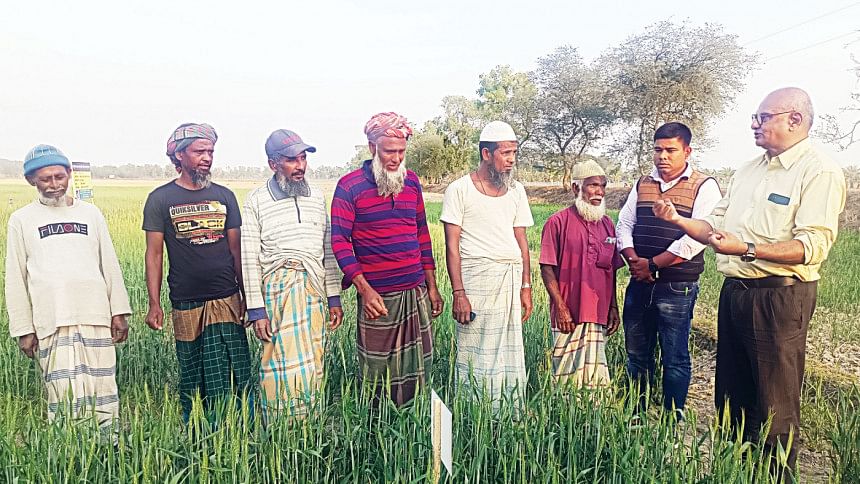
With the aim of bringing these fallow lands under cultivation, the Bangladesh Wheat and Maize Research Institute and Bangladesh Agricultural University have been conducting research under a joint initiative since 2017.
The initiative was supported by the Australian Centre for International Agricultural Research, Bangladesh Wheat and Maize Research Institute, Bangladesh Agricultural Research Foundation, Australia's CSIRO and the University of Western Australia.
Under the project, a total of 28 farmers successfully cultivated wheat using relay cropping on an experimental basis in the East Daulatpur and North Daulatpur villages of Kalapara upazila in Patuakhali. Seeing their success, 50 other local farmers have planted wheat using the method this year.
By planting seeds in wet fields among standing crops, farmers are assured that salinity is at tolerable levels. As such, the wheat can be harvested within 95 days of sowing if the field is irrigated once or twice during this period.
Abdul Khalek, a local farmer, said he started cultivating wheat using relay cropping on one bigha of land this year.
"I got about eight maunds [each maund is 37 kilogrammes] of wheat. I am happy to produce the grain on fallow land at nominal cost," he added.
To see how successful the project was, a delegation from the Australian government yesterday visited the project area and expressed satisfaction over the current results.
Dr Mrinmoy Guha Neogi, deputy project leader of the University of Western Australia, said more than 1 lakh hectares of land in Patuakhali fallow during the dry season.
As a part of their initiative, the Bangladesh Wheat and Maize Research Institute and Australia's CSIRO have been working jointly for the past 5 years to develop new varieties of wheat.
Two varieties, namely BAW-1147 and BAW-1290, were developed from the first two years of research as salinity tolerant genotypes. The two new breeds have already been evaluated for release by the National Seed Board.
Neogi then said they plan to ensure than no arable land is left uncultivated during the dry season as it is possible to produce at least 3 lakh tonnes of wheat at this time.
"We have encouraged farmers to cultivate wheat in such a way that even after the project period is over, they will produce wheat on their own initiative," he added.
He then said they encouraged farmers to follow the relay cropping method with available wheat varieties. But if salt tolerant varieties are grown following relay cropping, yields will be higher.
Dr Golam Faruq, director general of the Bangladesh Wheat and Maize Research Institute (BWMRI), said the agency has released salt tolerant wheat variety BWMRI-4 this year and it is suitable for cultivation in the southern region.
He said the peoples' tendency to eat flour-based products is increasing. So, increasing cultivation in coastal areas would reduce import dependence.
With this backdrop, the government should come forward to spread this method of, he added.

 For all latest news, follow The Daily Star's Google News channel.
For all latest news, follow The Daily Star's Google News channel. 

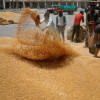
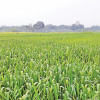

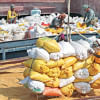



Comments